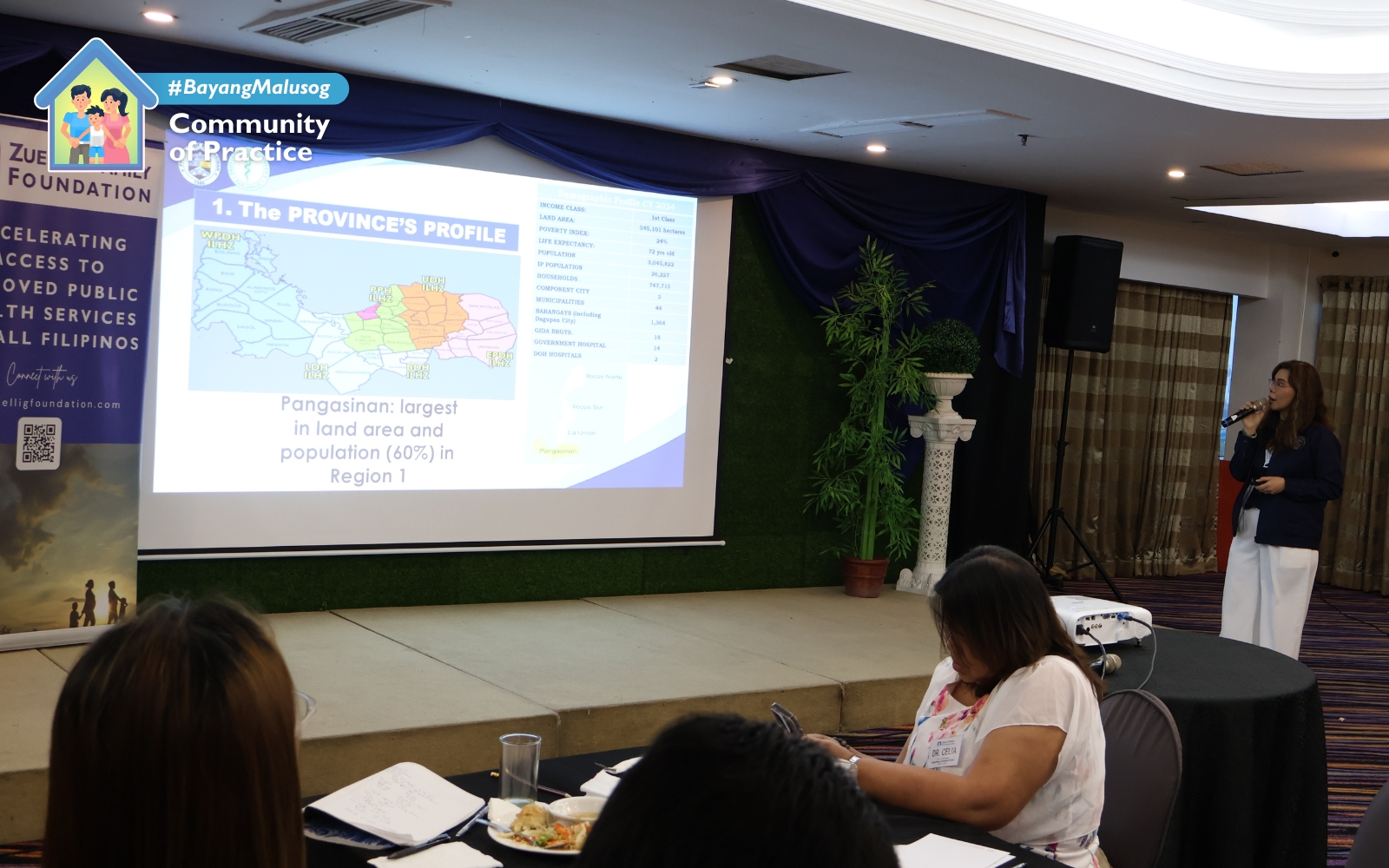Pangasinan’s Journey Towards an Integrated Health Care System
Insights from the Field

Pangasinan’s Referral Network Management and the Development of its Referral Manual
In the Philippines, many people still face a hard time getting the medical care they need. Often, they must jump from one hospital or clinic to another, wasting time, repeating tests, and spending more money. This problem is even worse in rural areas where hospitals and doctors are fewer.
In Pangasinan, leaders are working hard to change this. During the Bayang Malusog Community of Practice (CoP) session last March 27, 2025, Dr. Maria Vivian Villar-Espino, the Acting Provincial Health Officer, shared how the province has been building a better health system since 2016. Pangasinan’s goal is to make sure that patients get the right care at the right place and time. Their plan helps avoid duplicate procedures and high out-of-pocket costs, making healthcare easier to reach and more affordable for everyone.
The province fully supports the Universal Health Care (UHC) Law, which promises health services for all Filipinos. As of March 2025, Pangasinan has already finished the first two stages of setting up its local health system and is close to completing the third. A big sign of success: all 47 towns and cities have passed laws supporting UHC. This shows strong leadership and commitment at every level.
One of Pangasinan’s big achievements is the creation of the Pangasinan Health Care Provider Referral System (PHCPRS) Manual of Operations. This manual will guide doctors, nurses, barangay health workers, and health leaders on how to properly refer patients to the right hospitals and clinics. The manual is now being shared and tested by health workers across the province to get their feedback.
Of course, Pangasinan still faces challenges. There is still no formal group at the provincial level to fully manage the referral system. Not all groups are always cooperative. Some communities also need more involvement and information. On top of that, complex processes and frequent loss of trained health workers make things harder.
Engaging Key Stakeholders
What sets Pangasinan apart is how it works together with everyone. Barangay health workers, hospital staff, finance officers, and local officials are all helping build the system. Regular meetings and partnerships have kept progress on track. The province is also making sure that funding is available through its Special Health Funds (SHF), money dedicated to supporting UHC.
Pangasinan’s Vision
Pangasinan dreams big: it wants to become a model for a strong, complete healthcare system that the whole Philippines can follow. While the journey is far from over, Pangasinan is already leading the way. Dr. Espino also honored Dr. Anna Ma. Teresa De Guzman, the former Provincial Health Officer, for her strong leadership that helped lay the foundation for these health reforms.